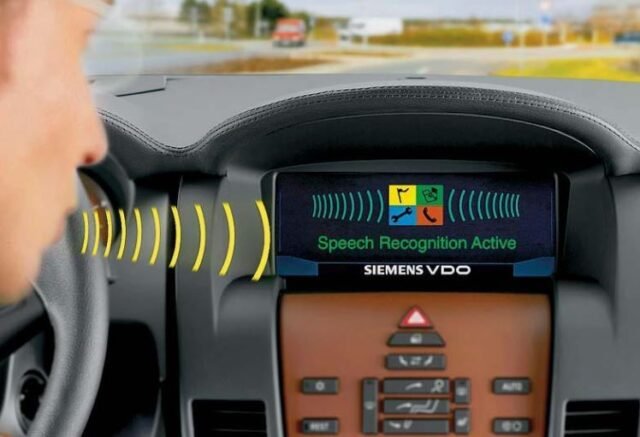In the rapidly evolving world of automotive technology, voice control has emerged as a staple feature in most modern vehicles. Once a novelty, it’s now become a standard part of the in-car experience, designed to minimize distractions and enhance convenience. But how accurate and useful is voice control in cars today, especially in 2025?
With the rise of intelligent assistants like Amazon Alexa, Apple’s Siri, and Google Assistant, car manufacturers have integrated sophisticated voice command systems into their infotainment units. This evolution is part of a broader movement toward smarter, more intuitive driving environments. As consumers upgrade to newer models or even explore cash for cars in Brisbane services to transition from older vehicles, they’re increasingly prioritizing smart features—including advanced voice recognition.
The Evolution of Voice Control in Cars
Voice control in cars began with basic commands like “Call John” or “Play radio.” But in 2025, we’re looking at far more complex capabilities. Natural language processing (NLP), machine learning, and artificial intelligence (AI) have transformed how systems understand, interpret, and execute commands.
Today’s systems don’t just respond to strict keywords—they understand context. For instance, a driver might say, “I’m feeling cold,” and the car intelligently adjusts the temperature without requiring a specific command like “Set temperature to 22 degrees.” This conversational approach creates a more human-like interaction that drivers find intuitive.
Accuracy of Voice Recognition in 2025
Thanks to advancements in AI, the accuracy of voice control in cars has improved drastically. Current systems boast recognition rates upwards of 95%, even in noisy environments or with regional accents. Microphone arrays inside the cabin isolate the driver’s voice from background noise, ensuring precise interpretation.
Some manufacturers even offer personalized voice profiles—the car recognizes who is speaking and tailors the response accordingly. This is especially useful in family vehicles or shared rides, allowing different drivers to enjoy a custom experience.
However, challenges remain. Certain accents, languages, and dialects can still trip up some systems. Also, non-native speakers or users with speech impairments might find limitations in understanding, although AI is gradually closing these gaps.
Voice Commands: Usefulness in Real Driving Scenarios
In terms of functionality, voice control is no longer limited to entertainment and calls. In 2025, voice systems handle:
- Navigation: “Find the nearest petrol station” or “Avoid toll roads.”
- Climate Control: “Lower the windows” or “Turn on the AC.”
- Vehicle Information: “How many kilometers until empty?” or “What’s the tire pressure?”
- Smartphone Integration: Sending messages, reading notifications, or scheduling appointments.
These features significantly reduce driver distraction, aligning with global safety initiatives and regulations. The fewer buttons and screens a driver must touch, the safer the driving experience becomes.
For car owners thinking about upgrading their vehicles through services like cash for scrap cars Gold Caost, voice-enabled features are often a strong incentive when choosing a newer model.
Privacy and Security Concerns
As voice control becomes more integrated into our digital lives, concerns about privacy and data security have grown. In 2025, most automotive voice systems operate via cloud computing, which means your commands—and possibly personal data—are processed externally.
To address this, leading manufacturers are investing in on-device processing, ensuring sensitive data doesn’t leave the vehicle. Additionally, systems now include encrypted communication and two-factor authentication for personal tasks like accessing calendars or making purchases.
Consumers are advised to regularly update their infotainment systems and review privacy settings to maintain control over their data.
Voice Control vs. Touch and Gesture Controls
While voice control is powerful, it’s not the only input method. Touchscreens and gesture-based interfaces still play a role. The ideal in-car interface in 2025 combines voice, touch, and gesture to offer flexibility.
For instance, a driver may ask for directions via voice but zoom in on the map using a touch gesture. Such hybrid approaches cater to various user preferences and reduce dependence on any single mode of interaction.
Real-World Use: What Drivers Are Saying
User feedback in 2025 shows high satisfaction levels with voice control—especially among tech-savvy drivers. According to a recent consumer survey:
- 82% of respondents said voice commands make driving safer.
- 76% regularly use voice assistants for navigation and phone calls.
- 61% said they trust their vehicle’s voice assistant to handle daily tasks.
However, older generations and less tech-inclined drivers may still prefer physical controls. To bridge this gap, automakers are making voice systems more approachable and adding tutorial modes to assist new users.
Conclusion: The Road Ahead for Voice Control in Cars
In 2025, voice control in cars is not just a trend—it’s a pivotal part of the driving experience. With enhanced accuracy, expanded capabilities, and greater personalization, voice assistants are redefining how we interact with our vehicles. Whether it’s adjusting the AC, finding a route, or responding to texts, drivers now enjoy a safer, smarter, and more seamless journey.
As technology continues to evolve, voice control will become even more responsive and adaptive, likely integrating with vehicle-to-vehicle communication and smart city infrastructure. For anyone still driving older, less connected models, it might be time to explore options like trading in through cash for cars Brisbane and stepping into the future of driving.
Voice control is no longer about convenience—it’s about safety, personalization, and smarter mobility. And in 2025, it’s more accurate and useful than ever.







